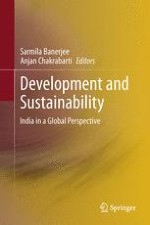2013 | OriginalPaper | Buchkapitel
23. Embracing the Global Knowledge Economy: Challenges Facing Indian Higher Education
verfasst von : Saumen Chattopadhyay, Rabindranath N. Mukhopadhyay
Erschienen in: Development and Sustainability
Verlag: Springer India
Aktivieren Sie unsere intelligente Suche, um passende Fachinhalte oder Patente zu finden.
Wählen Sie Textabschnitte aus um mit Künstlicher Intelligenz passenden Patente zu finden. powered by
Markieren Sie Textabschnitte, um KI-gestützt weitere passende Inhalte zu finden. powered by
